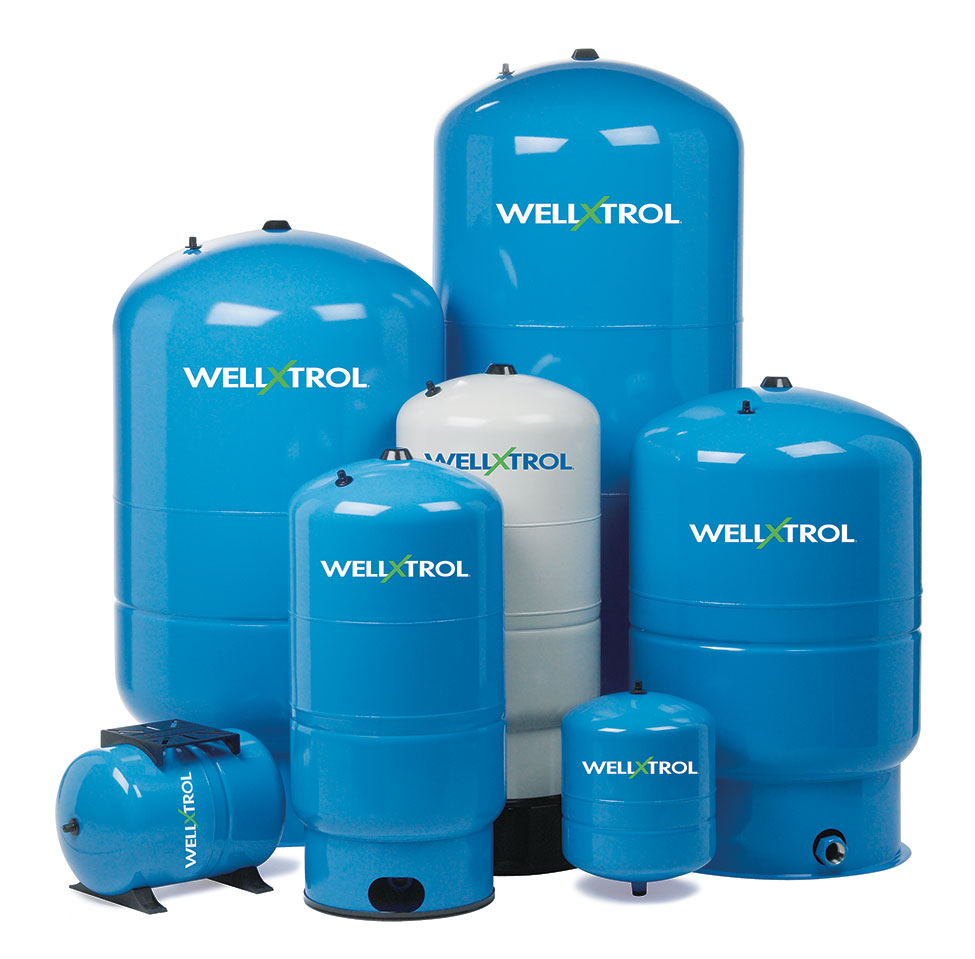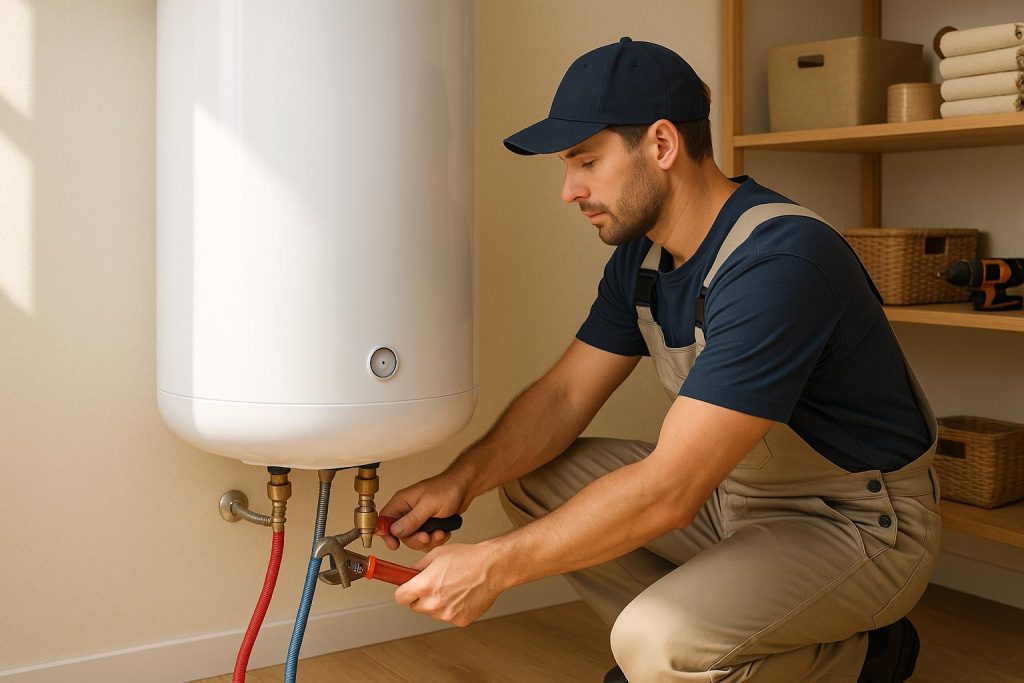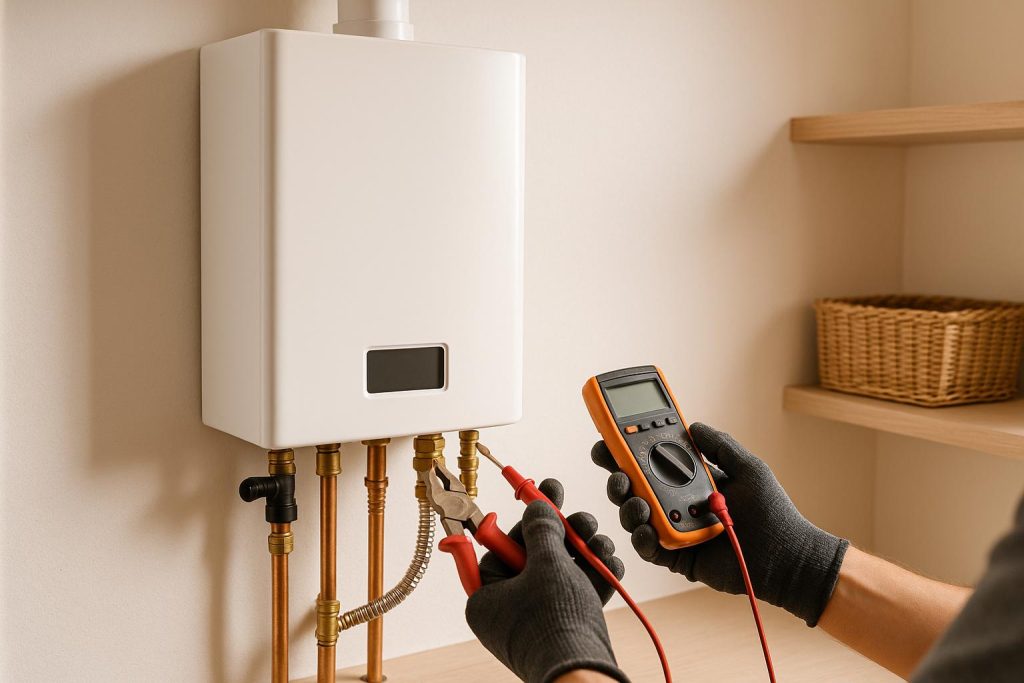The are 3 main types of pressure tanks. These are air-over-water, bladder and diaphragm pressure tanks. Bladder and diaphragm pressure tanks are relatively smaller than air-over-water tanks and also offer a higher drawdown. Air-over water pressure tanks are cheaper, but need a bigger space to install and will need regular recharging.

In brief, here are the different types of pressure tanks, some of which I will not discuss in this post:
- Diaphragm Tanks: Diaphragm tanks use a flexible rubber diaphragm to separate the water and air within the tank. The diaphragm prevents water from coming into direct contact with the air, reducing the risk of contamination. They are suitable for potable water systems.
- Bladder Tanks: Bladder tanks are similar to diaphragm tanks but use a replaceable bladder instead of a diaphragm to separate water and air. They offer easy maintenance as you can replace the bladder if needed. They are also suitable for potable water systems.
- Hydro-Pneumatic Tanks: Hydro-pneumatic tanks combine water and air without a physical barrier. A bladder or diaphragm is not used. Instead, these tanks rely on the pressure of the compressed air to maintain water pressure. They are often used in larger commercial or industrial applications.
- Captured Air Tanks: Captured air tanks have a pocket of air that is captured above the water line. As water enters the tank, the air is compressed, creating pressure. These tanks are simple in design and suitable for smaller residential applications.
- Plain Steel Tanks: Plain steel tanks were once common but have become less popular due to the risk of corrosion. They are usually lined with a protective coating to prevent rust. However, they require regular maintenance to ensure the coating remains intact.
- Composite or Fiberglass Tanks: Composite or fiberglass tanks are lightweight and resistant to corrosion, making them an excellent choice for environments with aggressive water or harsh conditions. They are also suitable for potable water systems.
The main difference between a bladder and diaphragm pressure tank is that a bladder pressure tank holds water in a balloon-like bladder, while a diaphragm pressure tank holds water under a diaphragm in the middle of the tank.
With a bladder pressure tank, you can replace the bladder if it raptures and the tank is waterlogged, but with a diaphragm pressure tank you will need to replace the entire tank if there is a problem with the diaphragm. The diaphragm is however made of a thick and high quality rubber and will last for many years.
How Pressure Tanks Work
Pressure tanks hold water under pressure, making sure that it flows to all points of your house with the desired pressure. The main reason for installing pressure tanks however is to prevent the well pump from running continuously, which extends its lifetime and cuts down on power costs.
The water pressure in the pressure tank is determined by the pressure switch. A pressure switch is small electrical box installed next to the pressure tank and is electrically powered.
The pressure switch will trigger the well pump to kick in when the water pressure in the tank goes down below a certain point, and stops when the pressure reaches a certain point also. If no water is drawn from the pressure tank the pump will remain off.
A pressure switch has 2 pressure settings. These are the cut-in pressure and the cut-off pressure. The cut-in pressure is the pressure at which the pump kicks in, while the cut-off pressure is the pressure when the pump stops filling the pressure tank.
The difference between the cut-off pressure and the cut-in pressure is what we call the drawdown. The drawdown is very important when sizing/buying a pressure tank.
In a simple language, the drawdown of a pressure tank is the amount of water drawn out from the time the pump stops, to when the pump starts again. The drawdown of a pressure tank is dependent on the size of the pressure tank and the cut-in and cut-off pressure.

Having gone through that introduction, let us now look at the 3 types of well pressure tanks in more details.
1. Air-Over-Water Pressure Tanks
Air-over-water pressure tanks which are also known as galvanized or even stainless steel pressure tanks are the oldest types of pressure tanks. If you live in an old house and have not bought a pressure tank in the last few years you most likely have this tank.
An air-over-tank pressure tank as its name suggests contains nothing but air at the top of the tank, and water at the bottom. The compressed air pressurizes the water but as more water is drawn the pressure decreases until the pump cuts in.
In the beginning of the process, the tank contains nothing but air, filled through a valve at the top. The pump then starts to run and fill the tank with water.
As the water fills the tank, it compresses the air at the top of the tank which in return increases the pressure of the water. The overall water pressure in the pressure tank is controlled by the pressure switch.
The main disadvantage of air-over-water pressure tanks is that they have a really low drawdown. To compensate for this problem, they are usually quite big in size, and are therefore not very practical for people with small spaces.
Another thing to note about these pressure tanks is that with time, the air gets dissolved in the water, and if not noticed early the tank will be waterlogged. To fix this problem, you will need to recharge your pressure tank from time to time.
Apart for their big size and the constant need to recharge them, air-over-water pressure tanks will last for many years. For a person whom space is not a problem and don’t mind recharging it, this tank will work very well for them.
2. Bladder Pressure Tank
Just like its name implies, a bladder pressure tank contains a balloon-like bladder inside the steel tank, installed at the bottom. The top part of the tank is filled with air. As water fills the bladder, it compresses the air further hence storing the water under pressure.
This is one of the best well pressure tanks. It is small in size, efficient and has a high drawdown compared to its size. It is also almost maintenance-free.
Before filling a bladder pressure tank with water, the bladder will have usually collapsed at the bottom of the tank. Start by filling the tank with compressed air from the inlet valve at the top of the tank.
With a bladder pressure tank, the pressure of the air should be 2 psi less than the cut-in pressure of the pressure switch. If for instance the pressure switch cut-in pressure is 40 psi, the pressure of air in the tank should be 38 psi.
As water fills the bladder, it inflates and due to its elastic nature it compresses the air at the top of the tank. The extent to which the bladder inflates and compresses the air is determined by the set pressure switch cut-off pressure.
It is important that you don’t set the pressure switch cut-off pressure too high as more water will cause the bladder to rapture. When that happens, your pressure tank will be waterlogged, reducing its overall efficiency.
A sign of a waterlogged bladder pressure tank is when the well pump runs constantly and/or you have low water pressure. To check if your pressure tank is waterlogged, try to bleed off air from the inlet valve at the top of the tank. If it is indeed waterlogged, water will come out instead of air.
A bladder pressure tank with a raptured bladder will behave like an air-over-water for the first few days. However, as more air is dissolved by air you will notice that the pump comes on too often and that the water pressure in the house is relatively low.
The main advantage of a bladder pressure tank over other tanks is that if you realize that the bladder is raptured you can easily replace it. There are bolts at the bottom of the tank connecting the flange that supports the bladder.
To replace the bladder, you only need to loosen the bolts and remove the flange. Pull out the old bladder, push in the new one and tighten the flange back.
If the water pressure in your house is low and the tank is not waterlogged, check the air pressure in the tank by connecting a pressure gauge to the inlet valve. If the pressure is way less than the cut-in pressure fill in some more.
Although a bladder pressure tank is relatively smaller than an air-over-water pressure tank, the bladder pressure tank is more expensive. I don’t know the reason behind the pricing but that is just how it is.
3. Diaphragm Pressure Tanks

Diaphragm pressure tanks have a rubber diaphragm somewhere between the vertical length of the tank, which separates the water and the air. The top part contains compressed air while the bottom is occupied by water.
A diaphragm pressure tank works just like a bladder pressure tank. Water fills the tank section under the diaphragm, which causes the diaphragm to curve upwards, compressing the air further, and as a result increase the water pressure.
The main difference between a bladder pressure tank and a diaphragm pressure tank is that the bladder can be replaced while a diaphragm cannot be replaced. If the diaphragm in a diaphragm pressure tank is raptured and becomes waterlogged, you will need to replace the tank. With a bladder pressure tank, you will only need to replace the bladder.
A diaphragm pressure tank is more efficient than a bladder pressure tank. The bladder occupies about 4% of the tanks volume, while the diaphragm only occupies 2%. The diaphragm is also less likely to rapture compared to the bladder.
Best Pressure Tank
If your are on the market for a decent well pressure tank, the WX 202 Amtrol 20 gallon Well-X-Trol diaphragm pressure tank will be worth your while. Amtrol is in my opinion the best manufacturer of well pressure tanks.
Unless you are installing the pressure tank from scratch, replacing a pressure tank is very easy and anyone with basic DIY skills can do it.






